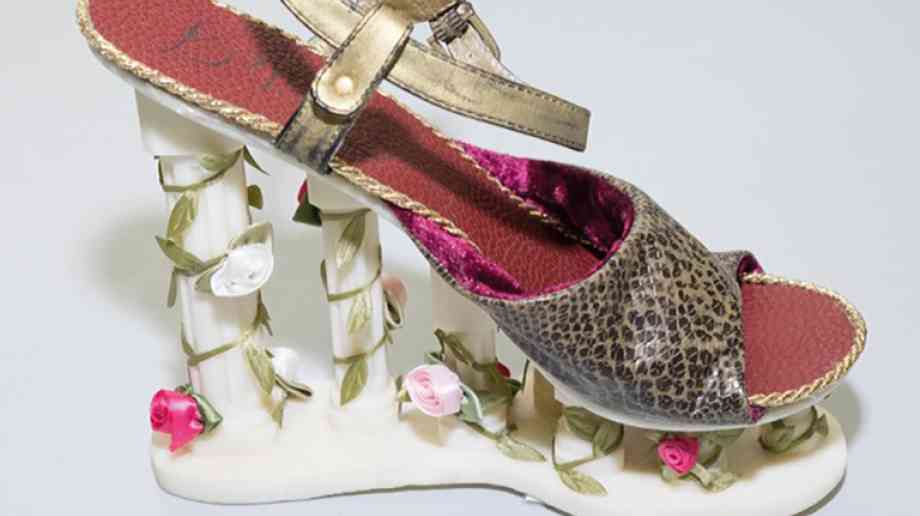
Turning digital into physical
With 3D printing already making an impact in industries such as medicine, fashion and food, it only seems fitting that we give our young people the knowledge and skills they need to embrace this technology. Julie Nugent from the Design & Technology Association explains how
Design and Technology is the study of how to think, develop and make a better world: innovating new products, services and experiences from concept through to design, manufacture and use. The subject covers areas like design, electronics, engineering, materials, textiles and robotics. Increasingly, young people are asked to imagine improvements to the world around them – where the advent of 3D printing in the classroom is leading to exciting and innovative manufacture and design.
In recent weeks, James Wheldon, joined the ranks of design and technology teachers who have been inspiring young people to think imaginatively about 3D printing. James, a teacher at St John Houghton Catholic Voluntary Academy, printed a new finger for one of his students who had lost the use of his hand after a bicycle crash. In doing so, he demonstrated the increased use of 3D printing in creating new, bespoke, prosthetic devices.
WHAT IS 3D PRINTING?
So what exactly is 3D printing and why should schools be excited about it?
At its most basic, 3D printing is the ability to turn “digital into physical”. Through a process known as additive manufacturing, solid three‑dimensional objects are constructed from a digital file where layers of the chosen material are built up to create the object required.
In its infancy, 3D printing was a technique pioneered by industry to enable more rapid prototyping within industry. Companies were able to move from traditional subtractive toolroom methods – CNC milling, turning, and precision grinding – to faster and cheaper forms of rapid prototyping through additive manufacturing.
Since then, 3D printing has extended to pretty much all industries. In food, additive manufacturing is used to squeeze out food, layer by layer, into three-dimensional objects. The method seems to work particularly well for chocolate, cakes and pizza.
In medicine, 3D printing is used extensively – anything from making dentures to orthopaedic parts – blurring the boundaries between surgical skill and technology. In 2014, surgeons in Swansea were able used 3D printed parts to rebuild the face of a motorcyclist who had been seriously injured in a road accident. Combine this with bio‑printing technology and we begin to see the construction of human organs and body parts through inkjet techniques. In this process, layers of living cells are deposited onto a gel medium or sugar matrix and slowly built up to form three-dimensional structures including vascular systems. Surgeons can create intricately realistic models of our own bodies, from valves to fingers to optic nerves.
THIRD DIMENSIONAL FASHION
3D printing has also entered the world of clothing, with fashion designers experimenting with 3D-printed bikinis, shoes, and dresses. Customers can now design their own clothes to match their exact body shapes and measurements. Technology intersects with fashion to create a truly bespoke fashion experience. Companies like Nike are using 3D printing to prototype and manufacture trainers whilst New Balance has invested in 3D printing technology to customise running shoes for athletes.
Even the cultural and heritage industries have been transformed by this technology. 3D printing is used increasingly to preserve, restore and to educate, with many European and North American museums using 3D printers to recreate missing pieces of their relics.
TAKING 3D PRINTING INTO SCHOOLS
As all industries are transformed by 3D printing, it seems only fitting that we give our young people the knowledge and skills they need to embrace this technology.
In classrooms across the country, pupils as young as 11 are embracing 3D printing. Pupils use Computer Aided Design (CAD) software to make a virtual design of the object they’re creating. This can be designed from scratch, using a using a 3D-modelling programme, or by copying an existing object, through a 3D scanner. The object is then built through an additive process, where successive layers of material are added until the entire object is created. Each of these layers can be seen as a thinly sliced horizontal cross-section of the eventual object.
The process is relatively simple for teachers and pupils to follow. They use a simple CAD package and feed in spools of materials – for example, plastics or wax. Even better, the cost of desktop 3D printers has fallen considerably. You can now buy a 3D printer – for the home or the classroom – for as little as £200.
However, the extent to which teachers are really embracing this technology can vary widely. There are still too many classrooms where the 3D printer is over in the corner, gathering dust.
Our experience suggests that it takes time to become familiar with a 3D printer and its associated software, and even longer to use it confidently and successfully in teaching.
Whilst the most self-assured teachers are often quite happy to experiment with the technology, those who lack support or expertise may struggle to engage.
WHAT TO CONSIDER
For schools investing in this technology, there are a range of factors to consider: affordability, reliability, ease of use, changing technology and network compatibility. In addition, schools should consider the cost of maintenance and support; software packages; as well as the choice and cost of materials.
Initially, schools tend to follow fairly simple templates, printing small figures such as 3D shapes – often trolls and dragons and Star Wars characters. However, over time, teachers – and their pupils – develop more experimental and innovative approaches.
This is where 3D printing can underpin inspirational teaching and learning – where pupils move beyond an understanding of how to download a file and work a 3D printer, to the point where they are engaging with the design process more fully and the actual 3D print becomes the realisation of an original idea.
As John Donnelly, head of department and specialist leader in education for design and technology at St James High School explains: “You need to excite the pupils about getting their design printed, but you need to make them aware that they are learning by designing and the 3D print is the prize at the end of the unit of work.“
The real excitement comes by enabling pupils to think differently; to consider the advantages of 3D printing and to come up with their own new and original designs. As Donnelly describes, “this is where the real learning will take place for the pupils too. Now I encourage pupils to design with plasticine and blue foam, to look at images from nature and biomimicry, in the hope they will design and produce something a little more Zaha Hadid than Rubik’s Cube.”
MOTIVATING PUPILS
Research by the Department for Education (2013) has shown that effective use of 3D printing has a positive impact on engaging and motivating pupils. Whilst teachers pointed to the need for time to develop their skills, to use the printer, confidently, they also described the highly motivational impact it had on pupils and their increased interest in STEM subjects.
In Aled Dafis’ school, Ysgol Bro Pedr, the use of 3D printers has already inspired many talented young people to progress to further study and careers in fashion and design. Kate Jones studied GCSEs in Textiles and A level Product Design. Her 3D printed shoes were inspired by Dolce and Gabbana and Roman architecture. Kate’s shoes (and matching bag) have already been featured in the Innovations Wales Awards and at the Big Bang National Science and Engineering Competition finals. Kate is now studying for a degree in Fashion at Northumbria University.
Dafis’ design and technology department has a clear philosophy for the use of 3D printers: they should encourage and enable more creative thinking and more innovative outcomes, with students given a totally free rein during the idea generation and development process. Having 3D printers as part of the manufacturing capacity allows these creative outcomes to become an actual reality – translating student ideas and designs into physical entities.
Dafis says: “having embodied 3D printing into our curriculum over the years, our students now see 3D printers as just another tool, much like a sewing machine, laser cutter or lathe.” In this way, students are encouraged to focus on the design process rather than the use of the printer on its own.
SOPHISTICATED DESIGNS
Increasingly, 3D printers are enabling schools to develop ever more sophisticated designs, with greater ability to manufacture complex component parts. The more teachers and pupils engage, the more individuals are empowered to be creative and test their imagination and innovations as well as their additive manufacturing skills.
3D printing – along with other new technologies – can be the catalyst for challenging and wide-ranging debate in classrooms. Pupils are encouraged to think about developments such as 3D printing medicines, drugs, clothes, weapons, and even bike helmets and to consider the range of moral, ethical and legal challenges these create.
For many young people, such debates are not just abstract discussions of a future world, rather they are an opportunity to consider how technologies such as 3D printing are transforming the worlds of work and home.
The Design and Technology Association actively promotes the use of 3D technology across primary and secondary education. We believe that young people should be highly literate in these new forms of computing and technology as well as excited and inspired by the potential these developments offer. However, we also appreciate that to deliver maximum impact for pupils, we need to support schools more. Teachers and pupils must be encouraged and supported to explore and develop ideas – with investment in teacher CPD and time a critical factor for success.
Further Information:Latest News
17/11/2025 - 09:26
Nearly two thirds of Initial Teacher Training providers believe that teachers are not currently prepared to meet the government’s ambition to raise the complexity threshold for SEND pupils entering mainstream schools.
14/11/2025 - 11:04
England’s councils are warning of a "ticking time bomb" in the special educational needs and disabilities (SEND) system, with new data showing deficits that could bankrupt local authorities within three years.
13/11/2025 - 12:14
Event for school leaders, governors and education professionals relocates to the historic Old Billingsgate venue in London.
13/11/2025 - 09:49
The regulations have been set following a second consultation and detailed collaborative working with organisations and people across deaf and hearing communities.
13/11/2025 - 09:39
The Education Committee has published a letter to the Secretary of State for Education asking for more detail about the Department for Education’s work on developing its SEND reforms.







